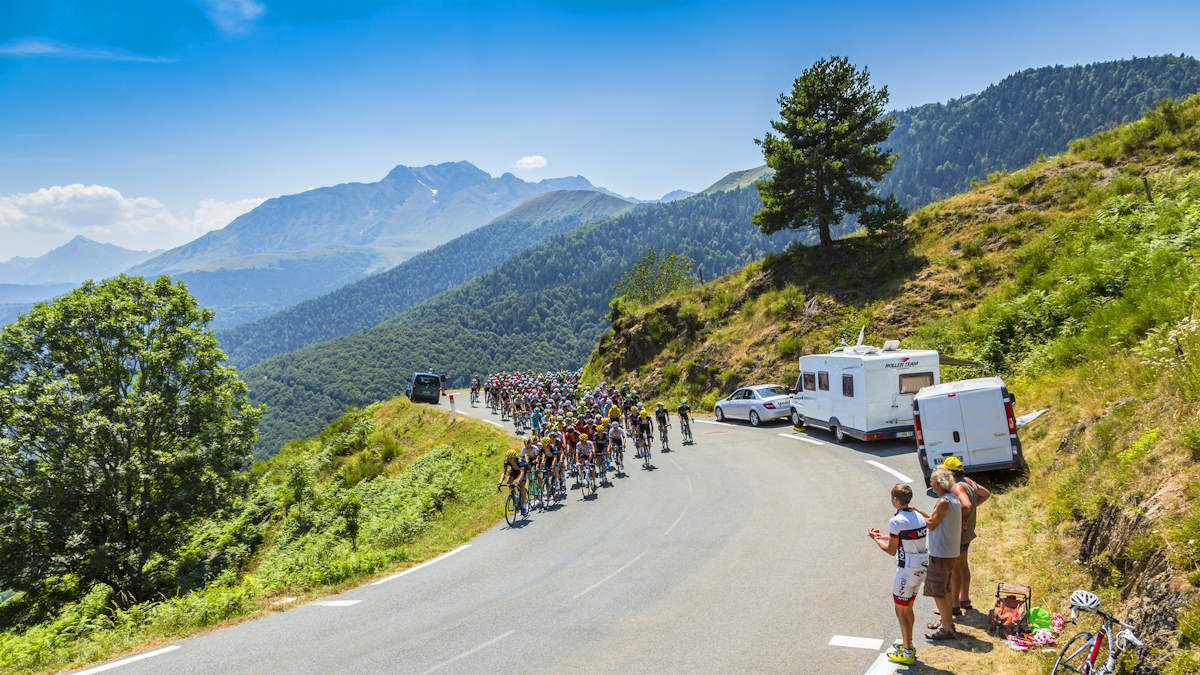Cycling is often associated with nature, tranquility, beautiful views, and the open road. But when it comes to professional cycling, the narrative changes significantly. The typical imagery of a cyclist pedaling through serene landscapes with the time and mind to appreciate the surrounding beauty isn’t always the reality, especially during competitive races. The experience, as described by professional cyclists, is akin to being in a high-speed, tactical battlefield, and less about appreciating nature’s aesthetics.
A racing cyclist’s perspective is largely determined by the stress levels of the race. In high-stakes races, the focus and energy are directed almost solely to the competition at hand. Whether the race occurs in the desolate expanse of a desert or along the captivating coasts of the Italian Riviera, the surroundings become inconsequential. The foremost sight a cyclist fixates on is the wheel spinning right in front of them. If they are in an attacking position, the focus turns inward to their own efforts, strategizing each push of the pedal, each breath, and each move.
Exhaustion, another inescapable aspect of competitive cycling, further restricts the rider’s attention to their immediate environment. In the throes of fatigue, the cyclist’s world shrinks to the singular objective of keeping up, of hanging on to the wheel in front of them and preventing themselves from getting dropped (cyclists have a phrase for that – “hanging on for dear life”). In these mentally and physically demanding instances, absorbing the beauty of nature is a luxury that professional cyclists often can’t afford.

American professional cyclist Joe Dombrowski accurately described the competitive atmosphere during a race in an interview. He pointed out, “People don’t realize how argy-bargy [racing] is. When you watch it on TV it looks like everybody just nicely rides together and occasionally there’s a crash, but it’s like a constant fight for position.” This statement uncovers the harsh realities of professional cycling, which usually goes unnoticed by spectators watching the seemingly serene peloton glide by.
However, the reality of professional cycling is not uniformly grim. There are instances, albeit less frequent, where cyclists get to immerse themselves in the beauty of their surroundings. These occasions are typically observed during less competitive races or at stages in the race where the competition is less fierce. During these phases, cyclists can let their gaze wander beyond the spinning wheels and sweat-soaked jerseys. They can admire the verdant rolling hills, the vibrant fields, views atop mountain passes, beautiful blue lakes and the seas, and the wide blue sky, and absorb the unique aura of the place they are racing through.
This balance between the intense, often brutal competitiveness and the sporadic tranquility offered by beautiful landscapes encapsulates the unique charm of professional cycling. The cyclists’ experiences are not monotonous; they fluctuate between extreme intensity and serene moments, painting a comprehensive picture of the professional cycling world that extends far beyond the finish line.
To conclude, the racing cyclist’s ability to enjoy the beauty of nature during a race is a multifaceted question, heavily dependent on the intensity of the race. In high-stakes competitions, the answer leans towards no; the focus lies solely on the race. However, during less stressful races, cyclists get a chance to enjoy their surroundings, adding a distinct flavor to their rigorous cycling journeys. Therefore, while competitive cycling may be far from a leisurely ride through the countryside, it isn’t entirely devoid of the chance to admire the beauty of the natural world.
- Top 18 fastest Paris-Roubaix editions - April 7, 2024
- Col de Tourmalet [Amazing photo from the 1953 Tour de France] - January 11, 2024
- Bernard Hinault and Francesco Moser, 1981 Paris-Roubaix - December 8, 2023
